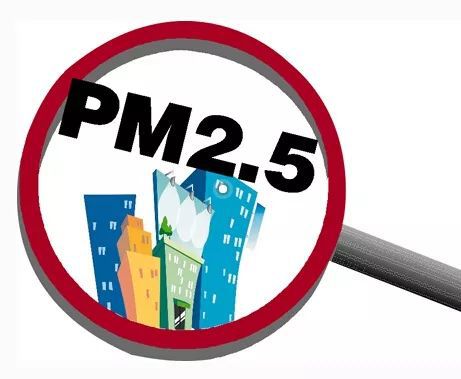

— Blogs —
—Products—
 Consumer hotline +8618073152920
Consumer hotline +8618073152920 WhatsApp:+8615367865107
Address:Room 102, District D, Houhu Industrial Park, Yuelu District, Changsha City, Hunan Province, China
Product knowledge
Time:2024-05-18 12:02:40 Popularity:2086
PM2.5 Sensor: mainly monitors airborne particles less than or equal to 2.5 microns in diameter, also known as fine particles. These particles have a greater impact on human health because they are able to penetrate deep into the lungs and even into the blood system.

PM10 sensors: mainly monitor airborne particles less than or equal to 10 microns in diameter, also known as respirable particles. These particles mainly affect respiratory health as they can enter the upper respiratory tract of the body.
PM2.5 sensors: common types include laser-type and infrared-type. Laser-type sensors emit laser light through a laser diode, which scatters light when airborne particles pass by, and the sensor derives the concentration of particles by measuring the amount and intensity of the scattered light. Infrared sensors, on the other hand, are based on the principle of light scattering and use an infrared LED light source and a photosensitive detector to detect the light intensity of the reflected light, thus determining the concentration of particulate matter.
PM10 Sensor: Works based on the principle of laser scattering. When airborne particles pass through the sensor, they scatter light, and the sensor determines the concentration of particles by measuring the scattered intensity of the light.
2.Health effects:

PM2.5: As PM2.5 particles are much smaller, they are able to penetrate deeper into the lungs, causing greater harm to the cardiovascular and respiratory systems, and in severe cases, may lead to cardiovascular and respiratory diseases.
PM10: PM10 particulate matter can also have an impact on health, but compared to PM2.5, it stays in the respiratory tract for a shorter period of time and has a relatively lighter impact on the human body.
3.PM2.5 sensor and PM10 sensor advantages and disadvantages:
PM2.5 sensor: Because the diameter of the monitored particles is smaller, it better reflects the subtle changes in air quality. At the same time, with the continuous development of technology, the accuracy and stability of PM2.5 sensors are also improving. However, due to the small diameter of particulate matter, it is more difficult to remove and therefore has a greater impact on human health.
PM10 sensors: are easier to remove due to the relatively large diameter of the particulate matter being monitored. PM10 sensors are also characterised by high accuracy, fast response and stability. However, it may not be able to reflect subtle changes in air quality compared to PM2.5 sensors.
4.PM2.5 sensor and PM10 sensor application scenarios:
PM2.5 sensor: widely used in air quality monitoring stations, smart homes, offices and other places that need to accurately monitor PM2.5 concentration.
PM10 sensor: it is more suitable for outdoor weather stations, dust monitoring, libraries, archives, industrial plants and other places that need to monitor PM10 concentration.
5. Monitoring range:

In terms of measurement range, both PM2.5 and PM10 sensors can usually measure particulate matter concentrations from 0 to a certain upper limit (e.g. 1000ug/m³). The exact measurement range may vary from product to product, but in general, these sensors are capable of meeting the needs of most application scenarios.
It is important to note that PM2.5 and PM10 sensors do not have identical measurement ranges because they monitor particulate matter of different diameters. Therefore, when selecting a sensor, you need to choose the right type of sensor based on specific monitoring needs and scenarios.
6.PM2.5 sensor and PM10 sensor price:
The price of PM2.5 sensors and PM10 sensors varies depending on factors such as brand, model, function and accuracy. In general, PM2.5 sensors can be slightly more expensive than PM10 sensors because PM2.5 sensors require higher accuracy and sensitivity to monitor smaller particles. However, this is only a general trend and the actual price will depend on the specific product and market conditions.
For specific price ranges, PM2.5 sensors and PM10 sensors can cost anywhere from $50 to $300. For example, some low-cost PM2.5 sensor modules may cost as little as $30, while some high-precision, multi-functional PM2.5 or PM10 sensors may cost $500 or more.
In short, PM2.5 sensors and PM10 sensors have obvious contrasts in terms of monitoring targets, working principles, advantages and disadvantages, and application scenarios. Which sensor to choose depends on the specific monitoring needs and scenarios.
Related recommendations
Sensors & Weather Stations Catalog
Agriculture Sensors and Weather Stations Catalog-NiuBoL.pdf
Weather Stations Catalog-NiuBoL.pdf
Related products
 Combined air temperature and relative humidity sensor
Combined air temperature and relative humidity sensor Soil Moisture Temperature sensor for irrigation
Soil Moisture Temperature sensor for irrigation Soil pH sensor RS485 soil Testing instrument soil ph meter for agriculture
Soil pH sensor RS485 soil Testing instrument soil ph meter for agriculture Wind Speed sensor Output Modbus/RS485/Analog/0-5V/4-20mA
Wind Speed sensor Output Modbus/RS485/Analog/0-5V/4-20mA Tipping bucket rain gauge for weather monitoring auto rainfall sensor RS485/Outdoor/stainless steel
Tipping bucket rain gauge for weather monitoring auto rainfall sensor RS485/Outdoor/stainless steel Pyranometer Solar Radiation Sensor 4-20mA/RS485
Pyranometer Solar Radiation Sensor 4-20mA/RS485
Screenshot, WhatsApp to identify the QR code
WhatsApp number:+8615367865107
(Click on WhatsApp to copy and add friends)
